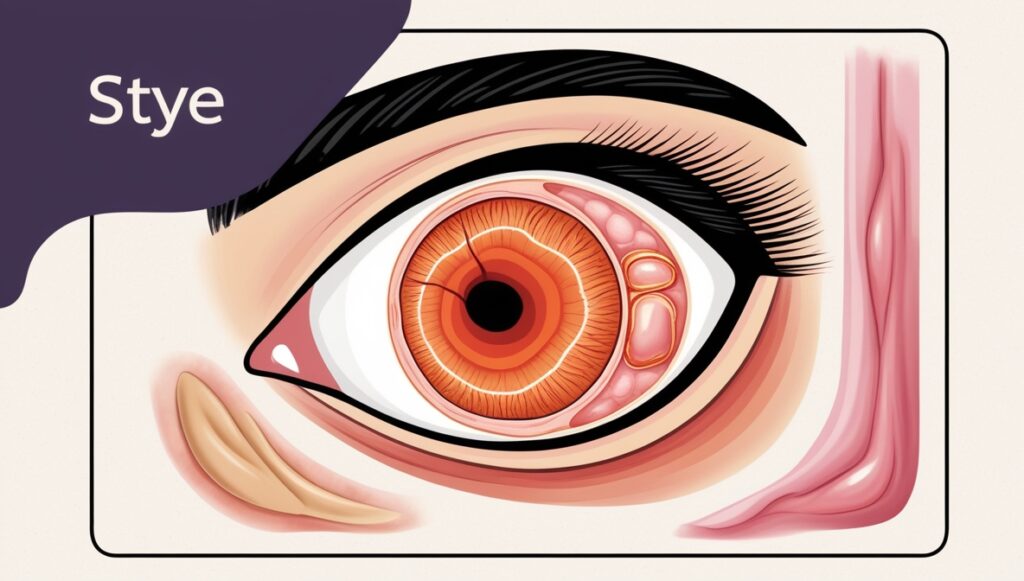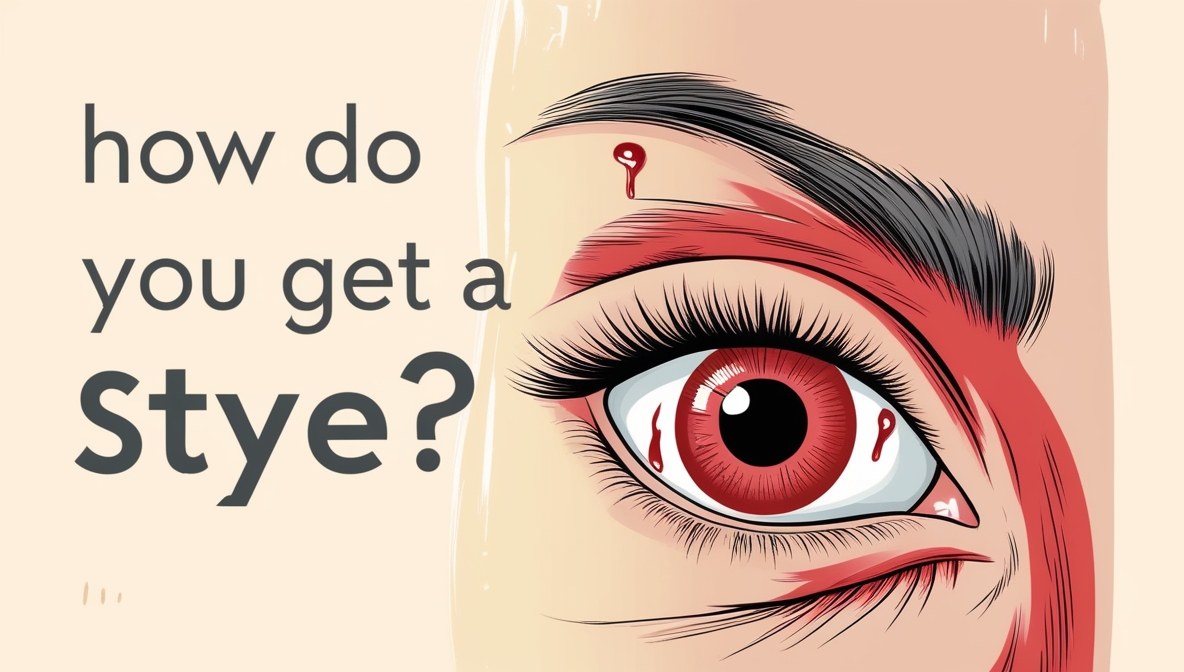A stye is that pesky and painful infection that leads to swelling and redness, with discomfort in the eyelid. It feels like a small painful pimple at the edge of your eyelid. If you have ever had one, you may be wondering, “How do you get a stye?” Know all the causes, risk factors, and preventive measures which can be your first step towards not making this condition be an annoyance.
What Is a Stye?
This is called a hordeolum or a stye. It involves the infection of the oil glands of your eyelid by bacteria. These glands are those responsible for lubrication of your eye. Once blocked, bacteria may grow and hence lead to infections. Typically, it results from either the inside of the eyelid, which is known as an internal stye, or the outer edge of the eyelid, which is an external stye.
How Do You Get a Stye?
This is due to an infection, wherein bacterial infection, especially the ones from the Staphylococcus variety, that normally live on our skin. Here are some of the main ways you can develop a stye:
1. Bacterial Infection
The most common cause of a stye is a bacterial infection. The bacteria can appear from an unhygienic condition, such as touching your eyes with your dirty hands, thereby entering the oil glands or hair follicles in your eyelids. This causes the swelling, redness, and bump.
2. Poor Hygiene
Not washing your hands can help spread bacteria into your eyelids, and touching even dirty eyes can lead to infection. Bacteria that grow from touched surfaces easily migrate into your eyes when rubbing the eyes with such hands.
3. Clogged Glands
You also have little oil glands under the eyelid that can become clogged if they don’t get cleaned daily. When the oils develop from these glands and become trapped inside, it can create a fertile ground for bacteria to grow, leading to a stye.
4. Cosmetics and Makeup
You have a greater chance of acquiring a stye if you use old makeup or share makeup with other people. You easily transfer the bacteria that live in makeup brushes, mascara, and eyeliner on your eyes when you do not clean or replace them properly.
5. Contact Lenses
One of the precaution measures is not washing contact lenses, which exposes the region to several strains of bacteria. The more you touch your eyes while handling your contacts, chances are that you develop a stye.
6. Skin Conditions
Some skin diseases, for example, rosacea or seborrheic dermatitis, increase your chances of developing a stye. These can impact the eyelid oil glands which are more prone to bacterial infection.
Risk Factors for Getting a Stye

Frequently touching or rubbing your eyes
Failure to remove eye makeup properly
Medical history of styes
Ongoing eye problems such as blepharitis or dry eye
Poor hygiene
Lower immunity due to underlying diseases such as diabetes
How to Prevent a Stye
Therefore, though it cannot be prevented totally, one can achieve the following to avoid it:
Wash your hands frequently and refrain from touching your face and eyes with dirty hands.
Remove eye makeup at nights, completely and do not share the makeup or brushes to other people
Clean your contact lenses properly and do not wear overnight, unless your doctor advised you
Do not rub your eyes because this could introduce the bacteria
Maintain good eyelid hygiene, especially when you have such conditions as blepharitis.
Treatment for a Stye
Most cases of sty or hordeolum will fade after a week or several days. You should visit your doctor if the presence of the pain and swelling, or if the stye will not go away. Often, by applying warm compress on the affected area, swelling and promoting drainage are facilitated. Sometimes, your doctor may give you antibiotics or suggest other treatments.
Conclusion
A stye results from the infection of the eyelid from the bacterial cause. It’s actually a common condition resulting from low hygiene and blocked oil glands. It is painful as well as unsightly, but most often not a serious condition. If you remain cautious about hygiene or properly care for your eyes, avoiding some common risk factors, you will be less likely to get a stye. In many instances of stye, you can self-treat with a few simple home remedies, but you should see your doctor if your symptoms persist or get worse.
FAQs
What causes a stye?

A stye is brought on by bacterial infection; most commonly, by Staphylococcus. The infection occurs when your eyelid oil glands or hair follicles become blocked and infected.
Will applying makeup give me a stye?
Yes, old and dirty makeup, and sharing makeup with others, can spread bacteria to your eyelids and increase your likelihood of getting a stye.
How do I avoid getting a stye?
To prevent a stye, maintain hygiene by washing the hands constantly and refrain from touching the eyes. Avoid leaving makeup on altogether, wash the contact lenses properly, and keep the eyelids clean.
Is a stye contagious?
Styes are not very contagious, but the disease-causing bacteria by it can be easily transmitted through touching contaminated beauty items like makeup, towels, or hands. Good hygiene practice to avert the spreading of infection.
Do styes heal on their own?
Most styes will resolve within days to a week without medical treatment. Warm compresses may also help to hurry the healing process along, but a doctor should be consulted if the stye doesn’t seem to be improving or is quite painful.
How do I treat a stye?
Applying a warm compress to the area may assist in the reduction of swelling and encourage drainage. Over-the-counter treatments may also be beneficial, but if it does not improve, consider consulting a doctor regarding antibiotic treatment.



